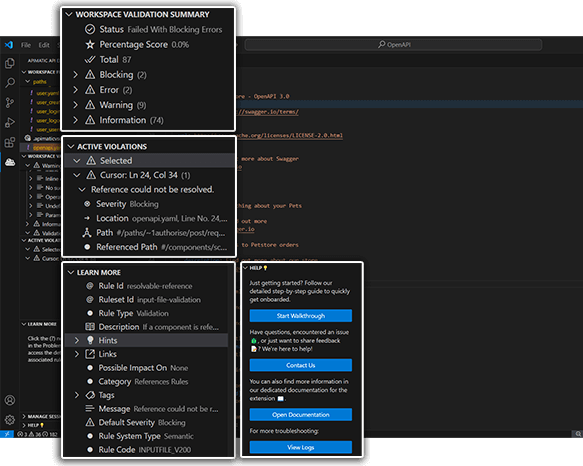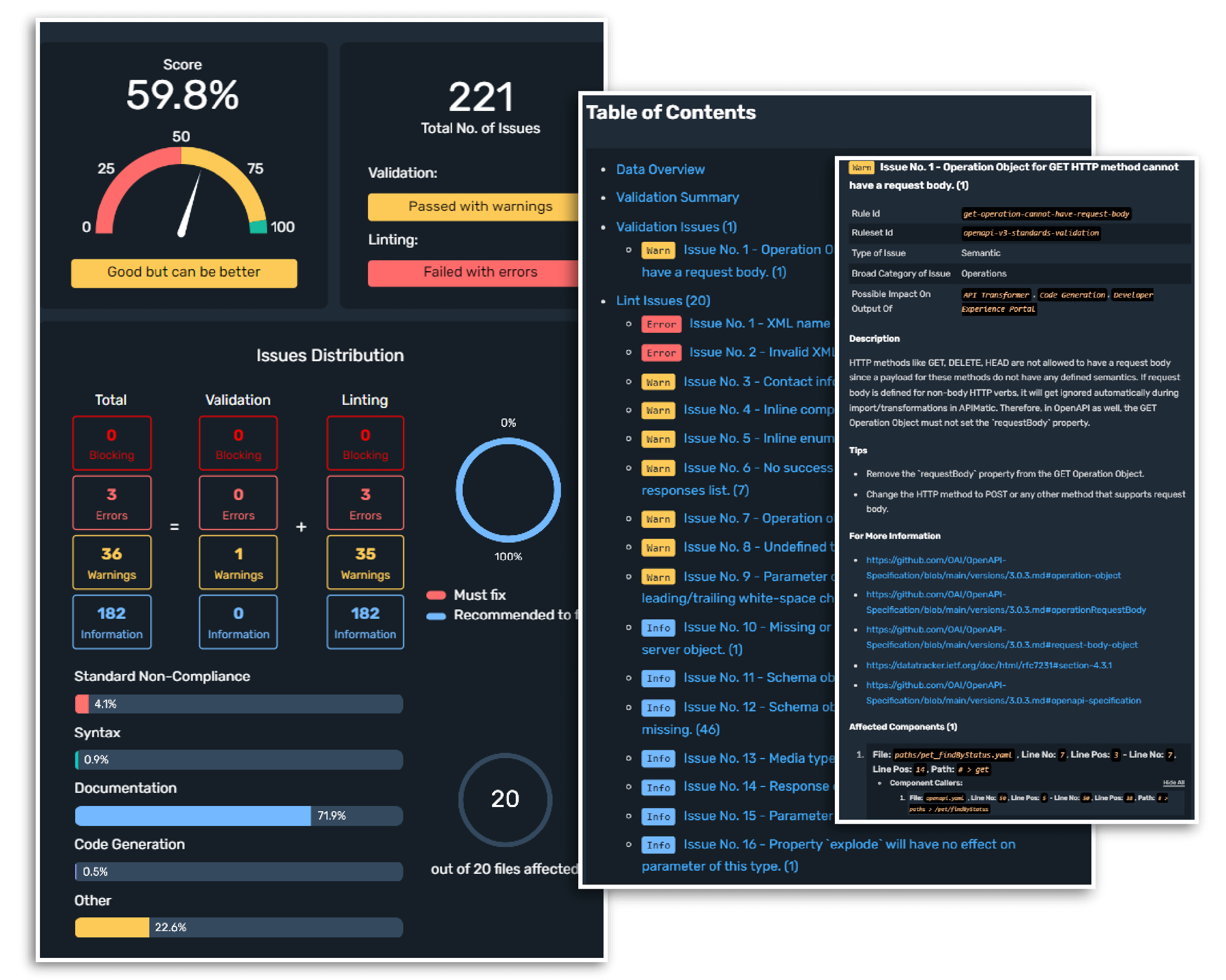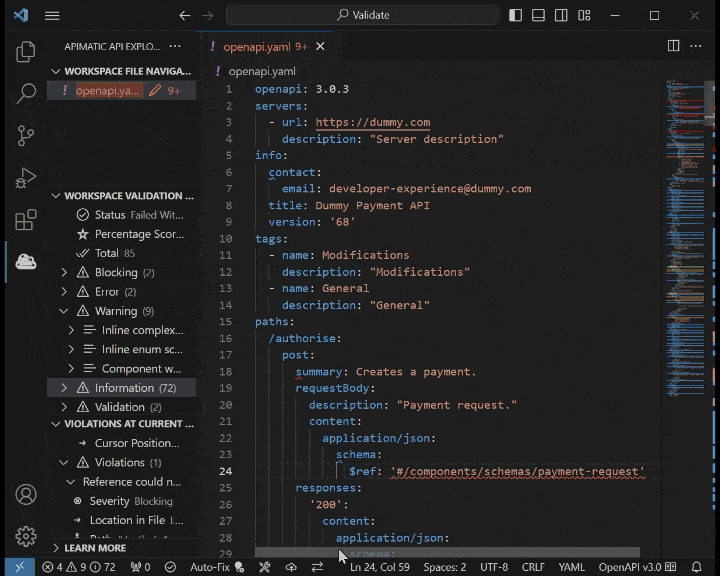Fix My OpenAPI
A Powerful VS Code Extension To Enhance Your API Experience
APIMatic’s VS Code extension "Fix My OpenAPI" ensures your API definitions meet standard checks along with built-in linting rules, guaranteeing high-quality code and portal generation.
This isn't just another validation tool; it's a robust toolkit designed to improve your entire API consumption phase.

Why Choose “Fix My OpenAPI”?
1. Standards Abiding Validation
Strictly validates your API definitions against the standards, unlike traditional validation tools.
2. Built-in Linting Checks For Quality Code and Portal Generation
Optimizes API definitions for code and portal generation, with over 400+ out-of-the-box linting checks.
3. Dedicated Views
Provides dedicated views for quick issue identification and efficient problem resolution, saving you time and ensuring a seamless API fixing process.

4. Extendable Validation Ruleset
Got your own validation rules? No problem! It lets you integrate your own custom rules into the validation process. Learn How.
5. Validation Is Configurable
Allows customizing the API validation. Disable linting rules, surpass validations, or even modify existing rules.
6. Audit Report Generation
Unsure about the quality of your OpenAPI definition? Or seeking an audit for your API?
Your search ends here! APIMatic's VSCode extension allows you to generate a comprehensive validation report in multiple formats (i.e. PDF, HTML, Markdown, JSON).
You can discover your API's overall validation score, explore detailed issue listings, receive precise file line information with suggested fixes, and much more.
Explore some audit report samples generated with the extension.

7. Auto-Fixing Magic
Magically resolves OpenAPI specification issues with a click. Discover automatic fixes.
- Fixes Silent Issues
More than 60% of the API definitions contain silent issues. - Efficient Issue Resolution
Automatically fixes common API issues, saving time and effort in manual troubleshooting. - Consistency
Maintains consistent standards across the API.

8. Support For Multi-File API Definition And Merge-Aware Validation
Helps you organize your API definition across multiple files and offers merge-aware validation for combining multiple API definitions into one.
9. Streamlined Workflow
Facilitates transforming your refined API definition between formats or exporting it directly to APIMatic's dashboard for unparalleled code generation and portal creation.

Perks
- Free to use.
- Validates all popular formats including OpenAPI, Postman, RAML, APIBlueprint, etc.
- 1000+ validation and linting rules to polish your API definitions.
- Highly recommended for the users wanting to generate SDKs and API Portal using their API definitions.
- Auto-fix common issues. We are still growing our number of auto-fixers. Want new fixers? Share your ideas here.
- Provides exact line and path information to easily trace issues in your API definition file.
- Provides reference call trees to backtrack the issue and fix it more quickly.
- Groups validation issues intelligently for easy discovery.
- Detailed documentation including links and hints available for each validation issue.



